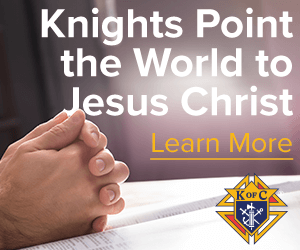Recently on Father Simon Says, a listener called in to ask about the innumerable religious orders that occupy the Catholic Church, how they came to be, and why they exist.
Fr. Simon began by taking us back to the early days of the Church and explaining the hierarchical structure.
“In the early days, you had a very simple structure: a bishop was assisted by the presbyters and the deacons. That was the structure, and a church might be a hundred to two hundred people. You would still have a bishop, presbyters, and deacons – ‘presbyters’ [meaning] elders, which we translate as ‘priest’.”
As the Church grew, especially after the Roman government began to tolerate Christianity, the Church became more and more ideologically diverse. Many wanted in on the business of religion and this new influx of people and ideas and things obfuscated the primary goal of attaining salvation. In response, some core Christians who remained devout in their faith chose to leave it all behind and move to the desert. There, they formed small communities of traditional Christianity where they could focus on the true purpose of religion.
However, these desert communities were too far removed from the jurisdiction of the bishops. Eventually, the two parties came to terms with this discrepancy and they laid down guidelines for the “loners” who would be living in seclusion. St. Basil in the east and St. Benedict in the west wrote “rules of life” for the communities so that they could have tenants to adhere to while away from civilization. These communities were the first religious orders, and we call them monks.
But as time went on, the monasteries began to evolve. Because of the good work they did, people began to give them gifts out of gratitude. And, as Fr. Simon explained, when luxuries and money begin circulating, corruption can arise. And when corruption would spread amongst these various religious orders, core groups would split off from those orders to form new ones. So over the years, the orders multiplied.
Then in the 13th century, the Church in Europe felt a great call for evangelization. And that call gave way to people like St. Francis of Assisi and St. Dominic. The Franciscan order, which emphasized the principle of strict poverty, was primarily focused on evangelizing the impoverished and uneducated. The Dominicans were largely comprised of scholars and were much better equipped to evangelize the more learned.
So as time went on, religious orders began to specialize in different aspects of ministry to the communities around them. If there was a particular need to address orphans, a congregation might spring up. If there was a particular need to address the homeless, perhaps a mendicant order would form.
“Where there was a special need for exemplary Christian life, a new order would form. And so, in a specific place, you would have a specific need, and groups of pious people would establish a community that took vows to address that need.”
Tune in to Fr. Simon Says weekdays at 1pm CT

